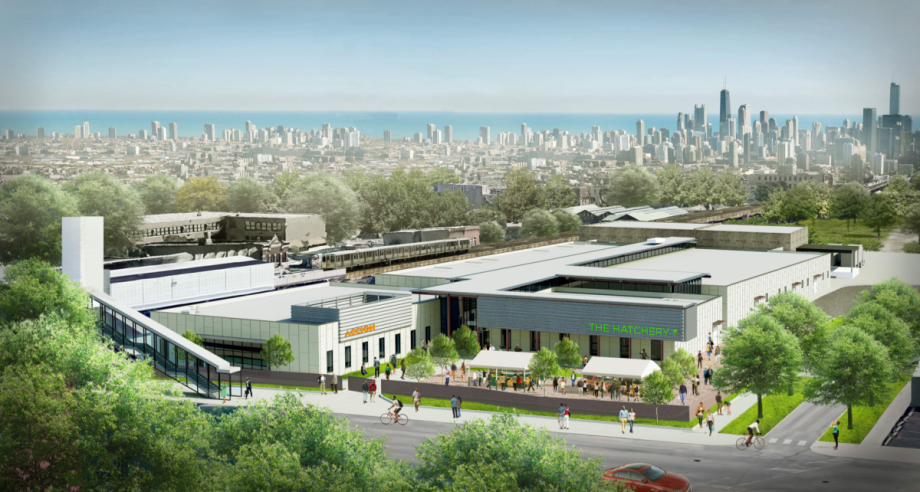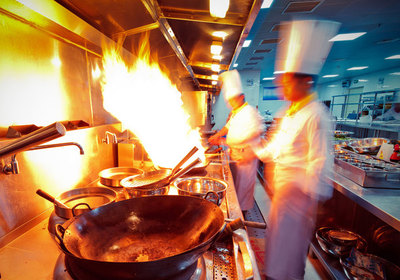
Aug 23, 2017
Phil Vettel | Chicago Tribune | August 21, 2017
Fred’s Mobil Station, which served Winnetka motorists for decades, is about to become a filling station of another sort.
Joe Krouse, Robert LaPata and Fred Gale, the owners of Ten Mile House restaurant in Evanston, are putting the finishing touches to Fred’s Garage (574 Green Bay Road, Winnetka), aiming for a mid-September opening.
“Fred (LaPata) was really bummed,” Krouse joked. “He thought we were naming it after him.”
The partners have expanded the original building, which has been gutted. When finished, the restaurant will be “an homage to the service station,” sporting two working garage doors (for open-air dining) and a large outdoor space that mimics the look of a gas-station canopy.
CONTINUE READING

Aug 18, 2017
Lewis Lazare | Chicago Business Journal | August 11th, 2017
ConsumerProtect, a San Diego-based consumer protection organization, has done the dirty work of examining City of Chicago health department inspection reports for restaurants and other food-related business throughout 2016 to produce a collection of findings it is calling — provocatively enough — “Dirty Dining.”
For those who eat out or visit their neighborhood pubs frequently, the information ConsumerProtect gleaned from the health department reports may not be especially comforting — particularly depending on what neighborhood you live and dine in and what kinds of restaurants you like to frequent in Chicago.
Residents of the Chicago’s Riverdale neighborhood (ZIP code 60827) may want to be especially vigilant when opting to dine out near where they live. Per the ConsumerProtect data, more than a third of food-related businesses in that zip code failed food service inspections in 2016.
But Riverdale isn’t the only neighborhood singled out. Others, including affluent Lincoln Park, Rogers Park on the city’s far north side, and West Garfield Park on the west side, all had businesses that received more than 10 health code violations each in 2016.
CONTINUE READING

Aug 11, 2017
Julia Kramer | Bon Appetit | August 8th, 2017
I don’t own a single piece of Cubs paraphernalia. I don’t have Chicago’s four-star flag tattooed on my forearm. I don’t care if you put ketchup on a hot dog. But there’s one thing from my hometown that I will absolutely go to bat for, and here it is: Chicago is clearly America’s most exciting city to eat in right now.
As a Chicago native who covered the city’s food scene for years as a local restaurant critic, I’m obligated to tell you that my hometown has always been able to hold its own against the best food cities in the country. But I can’t remember a time that I’ve been as psyched to eat there as I’ve been this year. Where other cities fall into soulless trend cycles, Chicago has a way of generating distinctively personal restaurants. So, SF and L.A., this might hurt a little, but here’s all the proof you need that the Midwest is best.
1. Dessert Comes First
Sweets as beautiful as works of art are nothing new. The problem is that they often taste as good as eating an actual canvas. What makes Anna Posey’s desserts at Elske (one of our Top 50 Best New Restaurants in America) unusual is that they’re so modern-looking and visually arresting that they could exist only in 2017—and yet they’re as simply pleasurable to eat as a classic slice of pie. The only challenge posed to the desserts at Elske is that the rest of the menu, from Anna’s husband, David—the former chef of Blackbird—is equally impressive: Every dish has a clean, contemporary look without sacrificing deliciousness.
2. A Suburban Food Court Is One of the Most Exciting Places to Eat
The International Mall in Westmont, Illinois, 22 miles from downtown Chicago, is more or less your typical suburban food court—fluorescent lighting, drop ceilings, and all—with stands selling inexpensive dumplings on Styrofoam plates. Right in the middle of it is Hanbun, a hidden gem run by a remarkably talented young chef, David Park, and his fiancée, Jennifer Tran. At lunchtime, the stand serves bibimbap and rice cakes and bulgogi. The food’s great, but it doesn’t prepare you for what’s to come in the evenings, when Park throws down a white tablecloth and serves a single group of six diners the “juhnyuk tasting,” a seven-course menu that refracts the foods of his Korean-born, New Jersey–raised upbringing through the techniques he accrued working the line at fine-dining spots in Chicago. The dinners have become so popular that Hanbun is booked up through the end of its lease in May 2018, but there’s no doubt that wherever Park goes next, it’ll become another destination.
3. This City Still Owns Fine Dining
All you really need as evidence is Alinea’s recent reboot. But ask any (food-obsessed) local to name his or her top openings, and you’re likely to hear about a life-changing meal at John Shields and Karen Urie Shields’ Smyth(another one of our Top 50 Best New Restaurants in America). The Shieldses met working at the legendary dining institution Charlie Trotter’s and returned to town after an acclaimed stint at Town House in Chilhowie, Virginia. Thoughtful five-, eight-, and 12-course tasting menus filled with eclectic produce grown specifically for the restaurant are served upstairs at Smyth; an instantly iconic burger (with bacon in the patty) brings in an after-work crowd to The Loyalist pub downstairs. What could more perfectly sum up Chicago dining than that?
CONTINUE READING

Jul 22, 2017
Oscar Perry Abello | Next City | July 19, 2017
Angela Taylor has been helping her neighbors grow food for years on the west side of Chicago. Soon, she’ll be helping some of them grow food businesses.
Taylor learned how to grow stuff at a young age. “Me being the youngest girl, I didn’t get to do the laundry and other chores inside,” she remembers. “I had to go outside and help daddy with the gardening.”
She and her husband moved into their current home, in the East Garfield Park neighborhood, in 2004. There was an abandoned community garden next door, covering two city lots, with raised beds.
“Right in front of where the garden had been [was] a notorious zone for the drug traffic,” Taylor recalls. “They sat in front of the garden on milk crates selling drugs all day and all night.”
She and her sisters cleaned up the space and put it back into use. It’s become the hub of the Garfield Park Community Council’s Community Garden Network, with 32 resident-led gardens scattered throughout East and West Garfield Park. Each garden provides some fresh fruits and vegetables for the gardeners, their families and neighbors, and the rest gets sold at the council’s bimonthly Neighborhood Market, which accepts food stamps as payment. “I’m sure you know we’re living in a food desert, and there is a lack of fresh produce,” says Taylor, who retired in 2012 from the Illinois Department of Human Services.
Taylor’s garden now has a rainwater catchment and irrigation system, and a community greenhouse with solar-powered heating and lighting. Every growing season, the garden network takes seedlings from the greenhouse to get started, and there’s enough left over to share with gardeners from other neighborhoods. There’s no more drug trafficking out front.
“When I first moved in, the seniors on my block wouldn’t even come out and sit on their porch because of all the drug trafficking,” Taylor adds. “But go there now and they’re sitting on their porch, some of them are taking naps, because now they feel safer in that type of environment. There’s not too much more to be said about that.”
Taylor hopes that The Hatchery, a brand-new, 67,000-square-foot food business incubator coming to the neighborhood, may have a similar effect on a much larger scale.
CONTINUE READING

Jul 7, 2017





